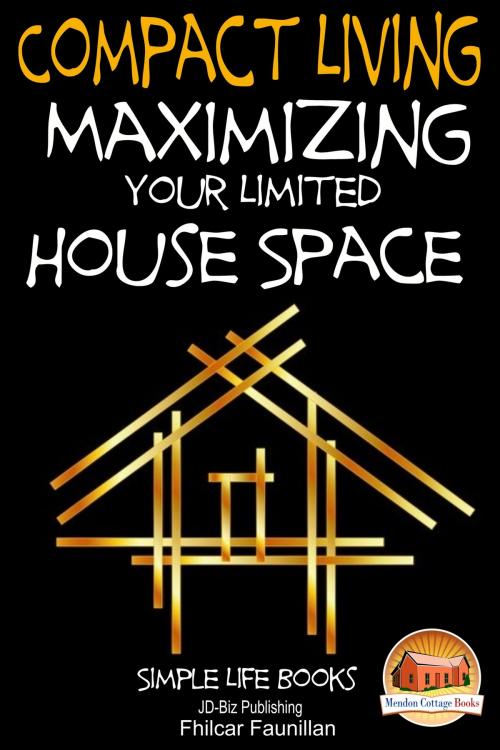| Author: | Fhilcar Faunillan | ISBN: | 9781311946263 |
| Publisher: | Mendon Cottage Books | Publication: | April 22, 2015 |
| Imprint: | Smashwords Edition | Language: | English |
| Author: | Fhilcar Faunillan |
| ISBN: | 9781311946263 |
| Publisher: | Mendon Cottage Books |
| Publication: | April 22, 2015 |
| Imprint: | Smashwords Edition |
| Language: | English |
Table of Contents
Introduction
Chapter 1: Changing the Way We Think About Compact Houses
Benefits of Compact Living
Global Impact of Compact Living
Chapter 2: Compact Living Basic Design Principles
Chapter 3: Compact Living 101
Maximizing Floor Spaces
Choosing Your Furniture Wisely
Creating the Most Out of Your Space
Conclusion
Author Bio
Publisher
Introduction
All over the world especially in Europe, therehas been a growing movement to promote compact cities. Compact cities are cities wherein the supermarkets, offices, hospitals, and other important places are set around one area. Through urban planning, compact cities are created in order to reduce the space used, to minimize emissions from extensive car use and to preserve more rural areas and green spaces. This movement acknowledges the fact that the world, more than ever is in need of space. Our population is continually growing far beyond seven billion and yet the Earth, in its finiteness, remains the same.
Of all the infrastructures that have to use the Earth’s space, the largest portion comes not from the industries, but from our residential homes, apartment buildings and condominiums – our living spaces. In the United States, the houses get bigger each year. It was just less than 1700 sq. ft in the 1970s and has now gone up to 2500 sq. ft in 2014. What’s ironic here is that the families today are smaller than in the 1970s. In the United Kingdommeanwhile, the average one-bedroom house is merely 495 sq. ft or 46 sq. m and even a three-bedroom home is just 947 sq. ft on average. Yes, there is a huge gap between the US and the UK’s average housing spaces but believe it or not, there are many more countries with less and less square footage, and yet, survey shows that these people are not less satisfied.
What I am trying to say is that space is merely a matter of how you use it. Let me ask, how many rooms in your house are not used that it ended up being a storage cabinet? Or how many useless things or non-working appliances do you have in your kitchen that you don’t dispose just because you don’t want your cabinets to look empty? There are probably many of you who have these unused spaces in your homes. The thing is, you could’ve grown vegetables with that space, it could’ve saved you dollars or it could’ve been use for something else.
With the growing movement for compact cities and the rising of global awareness on sustainability issues, it is time for us to rethink how much square footage we really need in our homes. This is what compact living is all about - it is maximizing your limited house space for you to create more living spaces that you never imagined existing in your small home.
Table of Contents
Introduction
Chapter 1: Changing the Way We Think About Compact Houses
Benefits of Compact Living
Global Impact of Compact Living
Chapter 2: Compact Living Basic Design Principles
Chapter 3: Compact Living 101
Maximizing Floor Spaces
Choosing Your Furniture Wisely
Creating the Most Out of Your Space
Conclusion
Author Bio
Publisher
Introduction
All over the world especially in Europe, therehas been a growing movement to promote compact cities. Compact cities are cities wherein the supermarkets, offices, hospitals, and other important places are set around one area. Through urban planning, compact cities are created in order to reduce the space used, to minimize emissions from extensive car use and to preserve more rural areas and green spaces. This movement acknowledges the fact that the world, more than ever is in need of space. Our population is continually growing far beyond seven billion and yet the Earth, in its finiteness, remains the same.
Of all the infrastructures that have to use the Earth’s space, the largest portion comes not from the industries, but from our residential homes, apartment buildings and condominiums – our living spaces. In the United States, the houses get bigger each year. It was just less than 1700 sq. ft in the 1970s and has now gone up to 2500 sq. ft in 2014. What’s ironic here is that the families today are smaller than in the 1970s. In the United Kingdommeanwhile, the average one-bedroom house is merely 495 sq. ft or 46 sq. m and even a three-bedroom home is just 947 sq. ft on average. Yes, there is a huge gap between the US and the UK’s average housing spaces but believe it or not, there are many more countries with less and less square footage, and yet, survey shows that these people are not less satisfied.
What I am trying to say is that space is merely a matter of how you use it. Let me ask, how many rooms in your house are not used that it ended up being a storage cabinet? Or how many useless things or non-working appliances do you have in your kitchen that you don’t dispose just because you don’t want your cabinets to look empty? There are probably many of you who have these unused spaces in your homes. The thing is, you could’ve grown vegetables with that space, it could’ve saved you dollars or it could’ve been use for something else.
With the growing movement for compact cities and the rising of global awareness on sustainability issues, it is time for us to rethink how much square footage we really need in our homes. This is what compact living is all about - it is maximizing your limited house space for you to create more living spaces that you never imagined existing in your small home.















